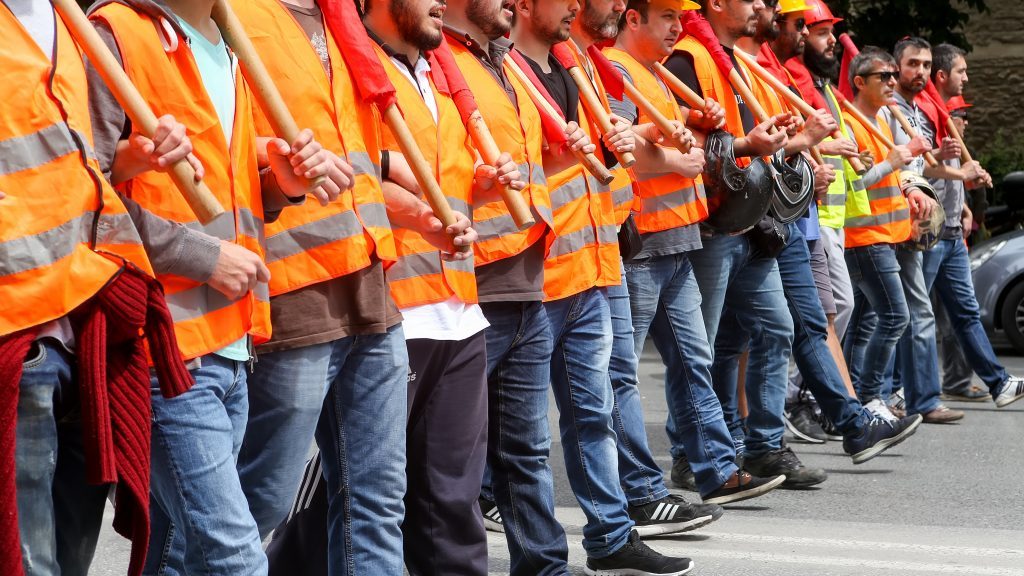No one entity can solve the labour shortage on its own.
During the Canadian Construction Association’s (CCA) annual conference recently, Corey Foster, director of workforce development with the Arizona chapter of the Associated General Contractors of America (AGC), explained how multi-level partnerships are key to solving the labour crunch.
“You’ve got to bring the right people together,” he said to the CCA crowd in Tucson, Ariz. During a discussion entitled Workforce Development Initiatives; ‘Partnerships that work’ — Lessons from Arizona Chapter AGC of America.
In 2006, the Arizona construction industry was hit hard by a recession, Foster said.
Prior to that, the industry employed about 244,000 people in the state. It lost more than 100,000 workers in a short time span.
Now, 14 years later, the industry is still 23 per cent behind where it was in 2006, employing some 186,000 people.
“Now everything we have been doing is to close that gap,” he said.
But Foster said it is important to note there are two different gaps to close: a worker gap and a skills gap.
“If you lose 100,000 folks you also lose skills. Those are skilled workers, those foremen, those are journeymen, those are folks who know how to get the job done quickly and efficiently,” he said.
He said skill training and recruitment have become equally important investments for the AGC. The organization has also invested in combination training to help workers develop more than one skill.
“Construction is very sophisticated. There’s a science behind everything that we do. It’s a highly skilled industry so the need for us to train and develop people is critical. That’s our ‘Why?’”
He said after this realization, the federal government reached out and suggested multi-level partnerships.
“What if we’re not just putting money on the table? What if local communities came together and brought their resources together. What could you do? What could you create?”
Resources started pooling from various sectors to help bring the heavy civil construction industry back up to snuff. Foster said the first layer of partnership started with contractors.
He said the AGC of Arizona’s eight main general contractors all committed to investing in skills development for any new hire.
“We didn’t want people just to say, ‘I’m hiring you for a project and I’m laying you off.’ That doesn’t serve the industry and it doesn’t serve the individual.”
After contractors, the AGC started looking at federal departments like the Department of Labour and the Federal Highway Administration then community-based organizations committed to workforce development.
“We scanned every workforce program and dollar flowing through our state. Who’s receiving dollars and who’s building capacity for workforce? Those folks need to be at our table.”
Once everyone was together, a charter was developed outlining goals and methods so all the various organizations were on the same page.
“We walked out of that room with the understanding that the contractors need to lead the show. Because they’re doing the other part. The training is long-term…that’s being done by the contractors.”
He said they found two-week bootcamps became a deterrent for new hires as two weeks without pay was driving people off. Bootcamps were reduced to one week as a result.
Training and recruitment also became more interactive with site and office visits a core part of the schedule.
The AGC also had a contract with contractors that anyone who stuck with the training was guaranteed a job and apprenticeship.
He said apprenticeship was important as it is the long-term plan for closing the skill gap.
In Arizona, in the past year the program has seen 32 journeypersons go through, 52 active apprentices, trained more than 400 workers, performed CDL training at a much lower than average price, performed high school outreach programs and much more.
Joe Conway from the Federal Highway Administration said the department has been investing in pilot projects across 35 states to develop and share best practices for workforce development.
Keith Blakslee of Markham Contracting Co. Inc. said his company has been actively working with ex-convicts and giving them a chance at meaningful employment.
“We’ve still got some of them working for us. Great employees,” he said.
A unique aspect of the workforce development program is a no poaching clause. Any company that poaches an employee from another is not allowed to participate in the program anymore, Blakslee said.
He said educating youth on what construction is has been one of the best outcomes of the program.
“Most people don’t understand what construction is. Trying to teach them what construction is, is what’s benefited us the most,” Blakslee said.
He said streamlining in class work for apprenticeship programs has also been beneficial as well as making it so that work on construction sites and field work could count towards the required 6,000 in-class hours.
“They didn’t want to go to college, they really don’t want to sit in class for an apprenticeship program.”
And all aspects of the industry need to focus on what’s best for the whole and not just for one company.
“That’s the big thing. What’s good for the industry? Because the stronger you can make the industry, the more we’re going to grow, the more people we’re going to have.”











Recent Comments